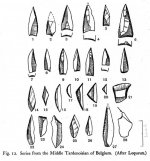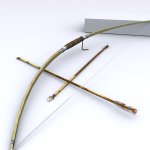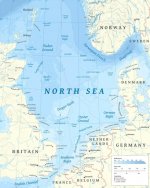It is all nice and dandy to look for WHG source in the Middle-East, Iran or the Caspian. But we have WHG admixture and a rising signal of Middle-Eastern in the Red Lady of El Miron. So whatever it was, it clearly started to influence Iberia during LGM. Apart from that WHG has no trace of Basal Eurasian, which is pretty much inexplicable if WHG came from the Middle-East.
It could obviously be the case that Middle-Eastern population entered Anatolia after WHG went north. That would explain for a number of things: WHG admixture in Anatolian EN. But if WHG came from Anatolia before the Middle Easterners arrived there two issues arise: First, it would ruin the Poetic Justice case so it can't be true (Sorry, Angela, for this joke) and secondly: Where is the U5b in Anatolian EN? It does have WHG admixture, but the only UP European mtDNA among it is U8a.
No need to apologize; I like spirited debate, and I very much like some humor mixed into all of this.
I'm not
specifically looking for the WHG source in the Middle East, the Caucasus, and the Caspian. I don't care on any personal level where it was, although yes, it would be nice if Nordicists and assorted racists were served some more poetic justice. However, I have too high a regard for my own integrity to distort what I see as a clear reading of the data (once and if I reach that point) in order to score points against such people.
According to Wu et al, the WHG either admixed with, or represent a gene flow of an at least slightly different group from Greece (and perhaps Anatolia before that) , or there was ancient substructure in Europe which existed before then, but even in that case they maintain that the WHG have a different relationship with modern Near Eastern populations than did the other clusters of Pre-Neolithic Europeans, and that relationship may be because of a relationship between the WHG and some ancient ancestors of modern Near Easterners. El Miron would have inherited that trait from them. Are we in agreement at least as to what they claim?
I'm quite aware that some people have raised the possibility that this is because the WHG migrated into Anatolia and contributed genes to the Early Anatolian Farmers. It was the first thing I mentioned when I first posted about this. However, after re-reading the paper carefully I realized that this group of researchrs, surely aware that this might be considered, and of how similar movements have created confusing results in other situations, don't mention the possibility anywhere.
Did they all suddenly get stupid and we're all so very much smarter? I guess it's possible.
As I said, I took a little refresher course in the Epigravettian. As part of that, I chanced upon a paper which shows that some researchers of this period think there was a cultural "entity" between Anatolia and the Balkans in the Gravettian and Epigravettian. Furthermore, the Gravettian in those areas is indeed very different from that in the central European plain in terms of the development of certain lithics, the prey hunted, and many other things. You have mentioned how, if hunter-gatherers moved, they were usually following their prey. Well, the new prey moved south to north, and so did the new lithics. That's suggestive to me. Is it proof? No. Am I totally convinced? Absolutely not, but I see even less "proof" for the other proposals.
Just a word about this term "Near Eastern" or "Middle Eastern". I hate to be the word, or definition, police, but...
It seems pretty clear to me that the Aurignacians came from the Middle East. The Gravettians may very well have originated south of the Caucasus, although not from Anatolia or the Levant. Obviously, that is anathema to some people, and in fact, talking about heads exploding, I can hear them popping as I speak, but it makes sense to me given that the Aurignacians and the Gravettians are part of a single "founding" population autosomally according to Wu et al. We know the EEF trace most of their ancestry to people who lived there, and almost half of the ancestry of the Yamnaya came from south of the Caucasus as well. In terms of those time periods, these people were all "Middle Eastern", or had "Middle Eastern" ancestry. None of them are exactly the same as modern Middle Easterners, not even the EEF. So, I don't know why the inhabitants of the Middle East become "Middle Easterners" only after the hunter gatherers leave. At the risk of again being accused of paranoia, I strongly believe it's because in the minds of some people, present company excepted, of course, it's that tainted Basal Eurasian that they associate with SSA or with Arabs which presents the big problem, hence that unending series of calculators designed to show which Europeans had the least of this despised "component". As to why, therefore, it's such anathema to some people to think that the WHG, who didn't apparently carry that dreaded Basal ancestry, came from the Middle East, you've got me. Nothing about the thought processes of such people makes sense to me.
All very ironic, in a dark way, to my way of thinking, as it's precisely those people, if they formed part of the ancestry of the Natufians, who participated in one of the largest advances in human history, the development of agriculture and animal husbandry, without which I wouldn't be typing on this computer, and later of metallurgy, and writing, and numerous other advances in human history, including the creation by the Jews of a monotheistic god, although I'm aware some people might not consider that an advancement. I find the whole thing so small minded as to beggar belief, but then I was a history and classics and archaeology person to whom it was made abundantly clear that indeed "ex oriente lux".
As to how Wu et al reconcile a
possible flow of genes from Anatolia into the WHG while maintaining that WHG have no Basal Eurasian signal, I don't know. I'm not sure anyone really knows what Basal Eurasian is, including them, unless they're holding out on us, which is certainly possible. The discovery of the CHG vindicated some of the early conclusions of the Reich lab, but I have no idea if they have or will discover one that is "Basal Eurasian". They've corrected their previous papers before, and maybe they will again. Amusingly, we've been informed that the latest, best analysis now shows WHG can be modeled as almost 50% Basal Eurasian, so who the heck knows. If that isn't the case, which wouldn't surprise me, perhaps the "Basal Eurasian" was in the Arabian refugium, as I posited in the mtDna ROa paper. Maybe it moved north to form the Natufian, after the departure of WHG like people and then spread far and wide. Maybe they were hiding somewhere near the Persian Gulf. We'll have to wait and see.
Or maybe Wu et al's second alternative is correct and it's ancient substructure in Europe. We'll have to wait and see about that as well.






